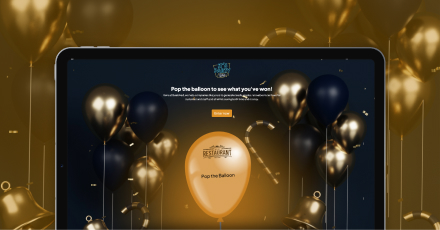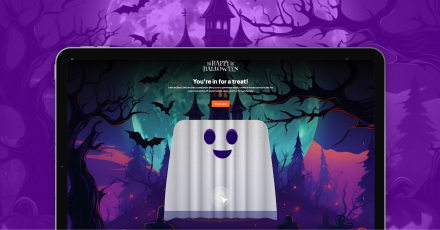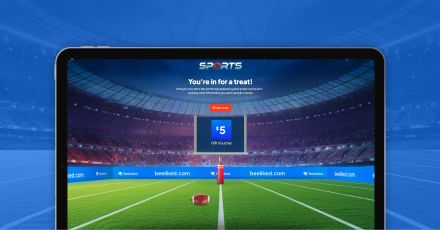In early May 2020, employee engagement in the U.S. accelerated to a new high of 38 percent. By July, it had dropped to 31 percent, its lowest level since 2000. The U.K. fares even worse, with employees’ low trust in leadership, resulting in record-low employee engagement. To maintain profitability, organizations must do something to stem this tide of disengagement and develop an employee engagement strategy.
Employee engagement solutions and strategies have been proven to increase productivity and employee satisfaction while reducing staff turnover rates. Why do engaged employees work harder, make the most significant contributions to their organization’s bottom line, and stay in their jobs longer? Individual reasons can vary, but all engaged employees have traits in common, including emotional commitment, excellent attitudes, a team player mentality, and a willingness to go the extra mile.

In this post, we want to discuss employee engagement strategies that work, including gamification, can inspire and motivate employees. We’ll also discuss what a successful employee engagement model looks like and what strategies you can explore to help employees feel valued, trusted, and respected—three of the most crucial steps on the way to improved employee engagement.
What are the Types of Employee Engagement?
There are three types of employee engagement.
- Engaged employees work with full passion. They’re emotionally attached to and personalize their company’s mission and goals. They also tend to be more innovative, developing new ideas and consistently taking action to move the organization forward. They typically work above and beyond their job requirements for the betterment of their company.
- Unengaged employees put in the required time but are rarely passionate about their job. They do what is asked of them but only expend enough energy to get things done. Their attitude can be either positive or negative about the company they work for. Generally, it can be said they’re “in it for the paycheck.”
- Actively disengaged employees are unhappy, unmotivated, and uninspired. They may be resentful of company policies and co-workers. They spread negativity within their department, which can often spread to the entire organization. Unfortunately, because they’re not driven to find other employment, they tend to stay with a company longer (unless fired) while often driving out more engaged employees who want to work in a positive environment.
Leadership plays a huge role in fostering employee engagement. Managers who fail to develop strategies to motivate and engage employees might soon discover they’re left with many more disengaged employees than engaged ones.

Mistakes that Hinder Employee Engagement
Most employers care deeply about employee engagement but fail to understand what’s needed to ensure employee happiness, which is directly tied to engagement. Common missteps include:
- Looking for quick results from rewards and recognition schemes. Employee engagement programs do not tend to be quick-fix solutions.
- A disconnect between what leadership and employees think makes for a great work environment.
- Management is left to figure out which engagement strategies to invest in. It’s the leadership’s responsibility to offer the right engagement framework.
Ultimately, most employee engagement strategies fail when communication falls short. That’s because if leadership isn’t openly communicating with employees, they’re unable to drive change. If you want to foster engagement, employees must feel they’re a part of the process, free to ask questions, and provide feedback.
How to Develop your strategy: things to consider
The most effective long-term engagement models are those where management feels empowered to create a workplace environment that promotes employee enrichment. There are dozens of ways to develop and design an employee engagement strategy, and which one you choose depends largely on your company culture. Approaches include onboarding, career planning, autonomy, leadership, and accountability.
Here are just five key ways to get started on your organization’s employee engagement strategy.
- Draft a company mission statement that excites and inspires employees. Avoid catch-all phrases other organizations use and that are “givens.” Instead, find the right words that clearly articulate the organization’s core beliefs.
- Create opportunities for professional and personal growth and give people the tools and support they need to achieve their goals.
- Help employees uncover their work purpose. Articulate how each employee’s work profoundly matters to the organization’s success.
- Introduce meaningful and measurable recognition and rewards. Study after study shows many engaged employees can be just as satisfied with smaller, personalized rewards as they are with traditional ones such as raises and bonuses. A formal recognition program doesn’t have to be extravagant to be effective.
- Understand there will be ebbs and flows of engagement. Even the most highly motivated and engaged employees have enthusiasm dips caused by complex and diverse factors. You can elevate energy levels by restructuring workflows, introducing new engagement strategies such as gamification, and amplifying employee accomplishments.
Organizations that embrace the idea people want to engage in work that matters can be highly successful at putting the right employee engagement strategies in place.

Employee Engagement Strategies
So, is there such a thing as employee engagement best strategies? Yes, but as you might suspect, they differ from organization to organization.
- Some companies like Dell have flexible work programs and invest time and energy into giving employees the tools they need to work flexibly.
- Southwest Airlines is known for its strong company culture and high employee engagement, much of which can be attributed to thinking outside the box when developing engagement strategies.
- Not all engagement needs to be work-related. Starbucks rolled out its paid volunteering pilot program in 2018, where employees volunteer with non-profit organizations that align with their core values.
Organizations with a fully engaged workforce make an ongoing commitment to their employees’ happiness. They invest in activities that help them reach employee engagement goals. These activities can range from involving employees in business planning to encouraging knowledge sharing and providing learning opportunities.
They also find ways for everyone to get involved while promoting well-being and a healthy work-life balance in a fun, competitive way. If that sounds like the benefits of gamification, you’re right! Gamification is a terrific employee engagement activity that motivates and rewards employees in ways that inspire and promote happiness. The best part is that the games can be customized to highlight company culture and focus on individual needs simultaneously, engaging employees on every level.
About BeeLiked
BeeLiked’s full range of customizable gamification solutions is designed to promote employee engagement in ways that result in employees believing in your organization’s mission, purpose, and values. We hope these employee engagement examples give you valuable insight into improving employee engagement within your own company. To learn more, get in touch with us online today to set up a no-obligation discovery call.
















